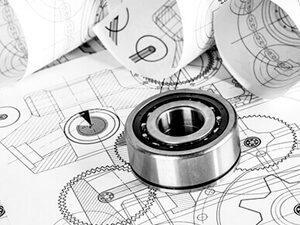
Rapid Metal Prototyping
There are several different methods used for rapid metal prototyping, with the most common being selective laser sintering (SLS), investment, plaster or sand castings and CNC machining. The best method to use to manufacture metal prototypes will depend on factors such as timing, material, dimensions and post-machining operations.
Advantages of metal prototyping
There are several advantages to using metal prototyping, including the following:
- Metal prototypes can be produced in almost any type of metal
- Metal parts can be produced without the need for expensive tooling
- It enables you to quickly assess a metal part design
- It allows for testing of the metal part with the real production materials
Types of rapid metal prototyping
- Selective Laser Sintering (SLS)-This makes use of tool/high carbon steel to create the prototype by building up extremely thin layers. It requires a minimum wall thickness of 0.040 inches. The SLS parts are finished to a high standard to create tooling masters and from these polyurethane functional parts can be produced in metals.
- Investment Casting – This is a metal casting process which uses a master pattern to create a ceramic mould. Typically carbon steel, stainless steel, bronze alloys and aluminium are used.
- Plaster Casting – This used an SLA (Stereo Lithography) master pattern to create a plaster cast mould and is ideal for manufacturing metal prototypes that will be die cast production parts. Surface finish is superior to that produced by sand casting. Plaster cast metal parts from aluminium and zinc alloy can be completed in around a fortnight.
- Sand Casting – This is very much like the plaster casting method but produces a rougher surface finish and is a cost effective way to create metal prototypes. Iron, zinc alloys and aluminium are typically used.
- CNC (computer numerical control) Machining – This is the process of fabricating metal components from a computer modelled mould. It uses a computer “controller” to direct the cutting and shaping process by a G-code (the numeric code precisely specifying how a component should be made). Curves and complex designs can be precisely and reliably cut as easily as a straight line. Because of the computer “controller” CNC machines can change their purpose depending on the requirements.
JH May and rapid metal prototyping
JH May is an experienced rapid metal prototyping provider. We have specialist rapid prototyping service staff who use a combination of traditional skills and the most up-to-date technology to produce high quality and fully functional metal prototypes with a quick turnaround time. We understand that time is of the essence and will aim to provide a quote on the same day it is requested or, for more complicated projects, as quickly as we can with the available information. We are also used to dealing with tight deadlines and so your job will be turned around in the shortest possible time.
You can find out more about our rapid prototyping service on our website, or give us a call today to discuss your requirements.